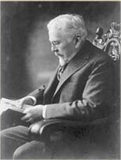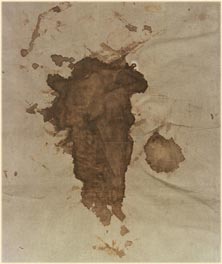

THE Chicago Historical Society's collection includes garments allegedly worn by Mary and Abraham Lincoln to Ford's Theatre on the night of the April 1865 assassination.
Additional crime scene evidence includes purportedly bloody dress fragments from Ford's Theatre and stained bed linens from the Petersen's boarding house where the president died. Several alleged Lincoln hair samples and a comb he may have used are also under analysis. Determining the authenticity of this blood and hair evidence is an important corollary of the Chicago Historical Society's investigation, as it may ultimately provide a comparative record for analyzing Mary Todd Lincoln's cloak.
Detail of sheet attributed to Lincoln's deathbed at the Petersen's house (CHS 1920.253).
Historians search backwards in time to establish the provenance, or ownership history, of artifacts.
For many of the assassination relics, this search begins with Charles Gunther, a Chicago candy maker who began displaying curios in his State Street factory in the 1880s. Gunther's confectionery featured his popular caramels, which he claimed to have introduced to America.

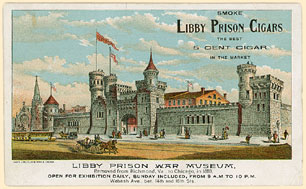
When Gunther's collection outgrew his candy emporium, he planned a Civil War museum with a consortium of Chicago businessmen.
They purchased Libby Prison, a notorious Confederate prisoner-of-war camp in Richmond, Virginia, dismantled the building, and shipped it to Chicago via 132 railroad cars. The prison was rebuilt on Wabash Avenue in 1889:
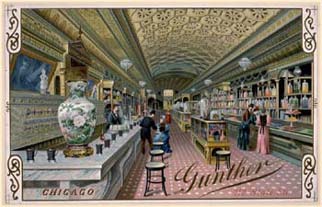
On the second floor, visitors could see an Egyptian mummy amid Civil War guns, uniforms, and flags. The mummy's label read:
Pharaoh's
daughter
who discovered Moses
in the bulrushes
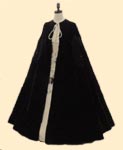
THE
BLOODY EVIDENCE
The Lincoln Assassination
Artifacts
Overview
The
Story of Libby Prison Charles
Gunther's Civil War Museum
The
Lincoln Assassination Artifacts
The
Chicago Historical Society's Lincoln Relics

